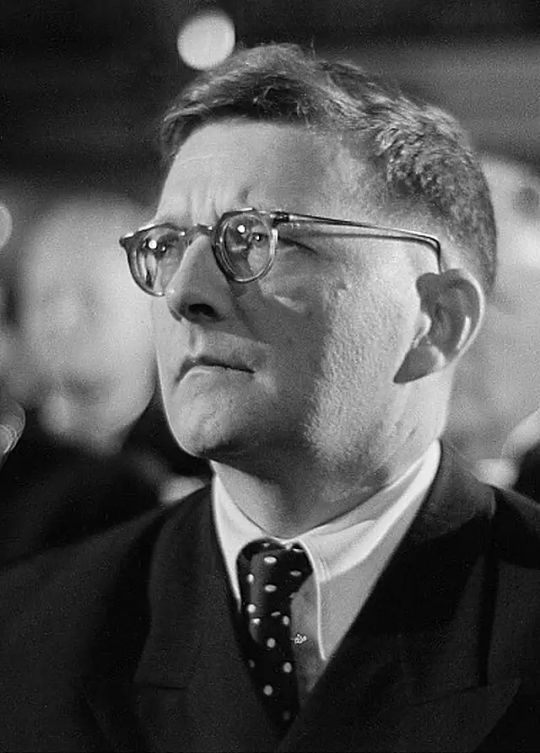#the Rothschild
Text







Miguel Rothschild: Suspended Waves (2017)
9K notes
·
View notes
Text
Antisemitism Required Reading
I get a lot of ignorant comments & tags on my posts about antisemitism, and I’ve already spent way too much time & energy engaging with them. So to preserve my sanity, I’ve made the decision not to engage too deeply with any commenters who haven’t at least read all of these in their entirety:
“Jewish Space Lasers” by Mike Rothschild
“People Love Dead Jews” by Dara Horn
“Jews Don’t Count” by David Baddiel
"More Than a Century of Antisemitism", GEC Special Report
If you’re not Jewish, please read all of this literature before adding anything to my posts about antisemitism.
Jews, please add any books you think should be on the list!
#I'll be adding and updating this post as I find & vet anything I feel should be required reading#antisemitism#people love dead jews#jews don't count#jewish space lasers#required reading#reading list#dara horn#david baddiel#more than a century of antisemitism#mike rothschild#jewish history#pinned post
2K notes
·
View notes
Text

#socialism#communism#democrats#new world order#climate change#republicans#wef#biden#trump#nwo#greta thunberg#rothschild
598 notes
·
View notes
Text

Judith Rothschild - Morning in Peglio (1993)
243 notes
·
View notes
Text
Moth Of The Day #202
Rothchild's Silkmoth
Rothschildia erycina
From the saturniidae family. They have a wingspan of 75-79 mm. They inhabit tropical rainforest and wet savannah. They can be found from Mexico to Brazil and Paraguay.


Image sources: [1] [2]
#moth#moths#lepidopterology#lepidoptera#nature#pretty moth#insect#bugs#moth of the day#motd#lepidoptery#entomology#bugblr#bug#insects#beautiful moth#saturniidae#saturniidae moth#saturniid#rothschilds silkmoth#rothschildia erycina
724 notes
·
View notes
Text


546 notes
·
View notes
Text

Hatshepsut Temple, Egypt 🇪🇬
#philosophy#sculpture#architecture#renaissance#italy#rome#19th century#art history#italian art#academia#dark academia#hatshepsut#temple#egypt#ancient history#ancient#ancient sculpture#antiquity#archaeology#baroque#buildings#cathedral#empire#geography#geology#history#masterpiece#rothschild
96 notes
·
View notes
Text
I made this post a little while ago listing some facts about shipwrecks that probably only I find interesting, so now I’m back to talk about some of them. Specifically, the Olympic. The Olympic was the namesake of the Olympic-class liners, whose most notable member was the Titanic. Out of the three Olympic-class ships - Titanic, Olympic, and Britannic - only one of them was actually unsinkable, and that was the Olympic.
Over the more than 20 years of its existence, the Olympic was never once in real danger. The Olympic was the danger. On its fifth voyage in September 1911, Olympic was running parallel to the HMS Hawke, a British warship designed specifically for ramming things. Olympic suddenly turned to starboard (right side of the ship if you were facing towards its front), catching Hawke’s commanding officer off-guard; he wasn’t able to avoid the collision and ended up ramming the other ship. Olympic was left with a substantial hole beneath the water line (although flooding was for the most part averted due to its bulkheads actually working properly, *cough* Titanic *cough*) and a slightly less substantial hole above it. Hawke, meanwhile, had its entire bow caved in. Olympic made it back to port just fine under her own power, while Hawke almost capsized. Somehow, no one was seriously hurt or killed.
Three fun facts about this situation: Violet Jessop, a woman famous for surviving the sinkings of both of the Olympic’s sister ships, was onboard the Olympic when this happened. This incident also reinforced the idea that the Olympic-class was unsinkable. The famous postponement of the Titanic’s maiden voyage also occurred because of this incident; a propeller shaft was damaged in the collision, they needed a new one ASAP, and, well, the Titanic was right there...
Four years later, WWI broke out. The Olympic was requisitioned as a troop ship, given 6-inch naval guns, and sent on its way. In 1918, while travelling to France with a literal boatload of American soldiers, Olympic spotted U-103, a German U-boat chilling on the surface of the ocean. Olympic opened fire on U-103, which immediately crash dived to keep from dying, then turned to ram the U-boat. Olympic hit U-103′s conning tower and tore open the hull with its propellers. U-103′s crew decided “fuck this” and abandoned ship; Olympic didn’t bother to stop to pick them up, so a nearby American warship did instead. It was later found that U-103 was preparing to torpedo Olympic when they’d been spotted, but they couldn’t flood the torpedo tubes in time. Olympic remains the only merchant vessel in WWI recorded to have sunk an enemy vessel (which would become a more common occurrence during WWII, to the extent that the Nazis apparently tried and hanged at least one captured British merchant captain for ramming one of their U-boats. The Nazis were ones to talk, considering they rehired the man who sank the Carpathia and was notorious for war crimes that included things like “drowning surrendered enemy crews by forcing them to strip and stand on the roof of his submarine, then diving the submarine” and “attacking designated hospital ships that made it very obvious they were hospital ships”).
Following WWI, while Olympic was being refit for civilian service, a sizeable dent was discovered below the waterline. It was later concluded to have been caused by a faulty torpedo, most likely fired by U-53 while the Olympic was travelling through the English Channel.
Olympic collided with another, smaller ship, Fort St. George, in New York Harbor on March 22, 1924. There’s not much information on how badly Olympic fucked Fort St. George up, just that Olympic apparently fucked around a little too much and found out, because the collision broke its sternpost (support post in the back of the ship; think of it like a central pillar in a structure), forcing the entire stern frame to be replaced.
On November 18, 1929, Olympic was cruising not far from the Titanic’s wreck site when the whole thing began shaking for two minutes. This was later found to have been caused by a 7.2 magnitude earthquake off the coast of Newfoundland.
The Olympic’s last hurrah (and casualty) was on May 15, 1934, when it collided with the lightship LV-117. Olympic had known the lightship was in the area, but didn’t know where exactly it was until they were right on top of it. Olympic’s captain immediately ordered a hard turn and the engines slowed, so Olympic wasn’t moving particularly fast when it did hit LV-117 (about 3 and a half miles per hour), but Olympic was fucking huge, and the people onboard barely noticed when they practically crushed the lightship under them. Only four of the eleven crew aboard LV-117 survived; four went down with the ship and three died in Olympic’s hospital (yes, these things had hospitals; I told you there were fucking huge).
Olympic was fully scrapped in 1937, forever going down in history as both the only Olympic-class ship that was actually unsinkable and the one with the longest reign of terror. Good God, man. I understand sinking the U-boat, but you didn’t need to bring like four other ships down with you.
#shipwrecks#shipwreck#shipwreck shenanigans#titanic#rms titanic#rms olympic#history#no wonder everyone thought titanic was unsinkable#with a track record like the olympic's i'd think it was unsinkable too#the conspiracy theories about the titanic are also complete bullshit#if anyone ever walks up to you and tells you the titanic was swapped for the olympic by the rothschilds#do me a favor and punch them in the nose for me#it's anti-semitic bullshit propagated by people who don't understand the basics of nautical engineering or history#the conspiracy that jp morgan sank the titanic is slightly less insane#but if you walked up to me and unironically started spouting it to me i'd keep walking#jp morgan sucked but there are easier ways to kill your business rivals
117 notes
·
View notes
Text

David de Rothschild by James Wright Photography
631 notes
·
View notes
Text
😈😈😈
#new world order#free massons#deep state oligarchs#illuminati mafia#khazarian mafia#zionists#jesuits#the club of Rome#the Rothschild#these people are sick#crimes against humanity#politics#depopulation#world control#mind control#money#power#greed#fame#destruction#these people are evil#fight for justice#corruption#speaktruth#standup#speak up#truth#please share#wwg1wga#MAGA
23 notes
·
View notes
Text
* * * Real History Lesson * * *
youtube
1 hour and 13 minutes of the real history that everyone should listen too 🤔
#pay attention#educate yourselves#educate yourself#knowledge is power#reeducate yourself#reeducate yourselves#think about it#think for yourselves#think for yourself#do your homework#do some research#do your own research#hidden history#history lesson#history#illuminati#cabal#rothschild#Youtube
102 notes
·
View notes
Text

Candy Factory Court, Philadelphia, 1979.
Architects: Baker, Rothschild, Horn and Blyth
#architecture#interior#Baker Rothschild Horn and Blyth#Candy Factory Court#Philadelphia#Pennsylvania#USA#1979
359 notes
·
View notes
Text


While you may recognize famed Russian composer Dmitri Shostakovich (right), it's less likely that you know the man on the left.
In 1937, Shostakovich took up a position teaching composition at the Leningrad Conservatory. Come 1939, one of his students was a young man by the name of Veniamin Fleishman (left). While studying under Shostakovich, Fleishman began working on a one-act opera called Rothschild's Violin, based on the story of the same name by Anton Chekov. However the Nazi invasion of the USSR in 1941 forced Fleishman to put his composition aside and he enlisted in the Red Army within the first days of the war. He would never finish his beloved Rothschild's Violin, as he was sent to the front and killed on September 14th 1941.
During his time at the Conservatory, Fleishman proved himself to be a promising young composer, and Shostakovich would soon look back and scold himself for not taking Fleishman's incomplete manuscript out of Leningrad with him when he fled. Luckily, he still had connections in the besieged Leningrad, and soon had the manuscript sent to his residence in Moscow. Shostakovich, in memory of Fleishman, completed the manuscript in 1944.
While he seldom used it for personal gain, Shostakovich made use of his influence and public stature to make sure that Fleishman's opera was recognized. Dmitri Shostakovich's insistence that the opera be published and performed made sure that Veniamin Fleishman's memory would not die along with him.
#dmitri shostakovich#shostakovich#classical music#history#second world war#music#soviet union#ussr#russia#wwii#ww2#rothschilds violin#leningrad#veniamin fleishman
57 notes
·
View notes
Text

ceiling fan. Sophie Rothschild. LA 2022
instagram.com/jaredkocka
#sophie rothschild#film#35mm#jared kocka#film photography#jared thomas kocka#jareds diary#LA#model#socks#fashion
77 notes
·
View notes
Text




TO ALL THE KITTY’S APPRECIATION WEEK
DAY 2 (2/12) | Favorite moment with Trina
#dan covey#trina rothschild#kitty covey#kitty song covey#xoweek2024#season 1#1.01#ours#by day#xo kitty#xokittyedit#netflixedit#cinemapix#asiancentral#cinematv#dailyflicks#filmtvcentral#dailynetflix#filmtvdaily#pocfiction#userbbelcher#chewieblog#useroptional#userstream#gifs
82 notes
·
View notes
